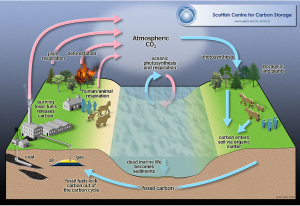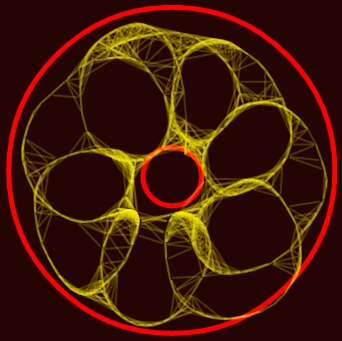Life in the Cell Begins at the Edge of Death, Part 4
Part 4: Reinterpreting the Perception of Oxygen Consumption
Most books state – “exercise increases oxygen consumption” – and generally use the word consume(d) to describe oxygen’s relationship to exercise, i.e. oxygen consumption.
The problem with the word ‘consumed’ is that it’s vague and mysterious to many people. It indicates something disappeared or is taken away from our senses – whereas the word ‘combine’ says two things get together – indicating something else… something concrete is made and still present.
‘Oxygen consumption’ really means:
CO2 was made. because/and Oxygen combined with fuel.
That is how I want you to think of aerobic metabolism and nutrition. Nothing disappears into the nothingness of non-perception. Specifically, CO2 gas is created as O2 combines with C. (C = Carbon) And CO2 gas – though invisible – is concrete and even measurable.
So, a reduced and more simple way of describing aerobic metabolism is:
- C + O2 –> CO2.
This ignores the production of heat and water or other elements attached to food molecules. So now you see:
- The single ultimate fuel for your body is Carbon – expressed often just ‘C’.
Special Remarks:
When you hear lifeforms on Earth are carbon based lifeforms – this is based on and related to the concepts of Carbon Balance or the Carbon Cycle of Life – pictured below. Plants take CO2 out of the air and store carbon in food, e.g. sugars stored in their leaves or fruits. Seeds and nuts store the carbon as various types of fat. All animals – herbivore, carnivore, or omnivore – eat carbon based foods. Animals combust carbon essentially the same way automobiles do and both release the CO2 back into the atmosphere.
Like animals, the Earth ‘respires’ or breathes cyclically each spring and fall – taking a huge ‘breath’ near the start/end of seasons. Plants take in huge amounts of carbon during the growing season, then release carbon back into the air when plant matter decays.
 Even the soil of the Earth is ‘alive’ and respires. For the record, carbon isn’t even among the top 10 elements in the Earth’s crust or soil. It’s number 15.
Even the soil of the Earth is ‘alive’ and respires. For the record, carbon isn’t even among the top 10 elements in the Earth’s crust or soil. It’s number 15.
The carbon cycle mainly involves CO2 release into the air and CO2 removal from the air taken out by plants. Soil is a smaller, but significant player.
Image courtesy of Harry C. – under Creative Commons Attribution-Share Alike 3.0
Main Points
- All the C in the CO2 you exhale comes from carbon in everything you ate.
- Carbon is the single ultimate fuel.
Hang in there… you’ll soon come to understand why I’m showing you this stuff.
The scientific origins of nutrition, functional medicine, and exercise physiology all stem from the combustion experiments I am showing you…. meaning you are learning the origins of how humans came to understand nutrition, metabolism, and exercise science in the first place.
I know it seems strange to think of carbon or acetic acid as the ‘only fuel for the body’ and stranger yet… that this is the key to more completely understand food, health, and exercise science. This ‘burning carbon as fuel’ approach will simplify and connect to many concepts on nutrition – and moreover, will clarify many misunderstandings. You will see why and how it does in the next few sections and over the next few weeks.
The next section was originally the introduction. I simply decided to delay critical comparison of modern scientists and educators to ‘past masters’. I want you to understand why modern terms and techniques used by writers and educational programs make it extremely difficult, if not impossible, to definitively understand food and metabolism. You’ll see it’s practically impossible to fundamentally understand food, gut health, physical training, and physiology – unless you see acetic acid and carbon as fuel.
Next, Part 5: The Origins of Understanding Food, Fuel, and Metabolism

